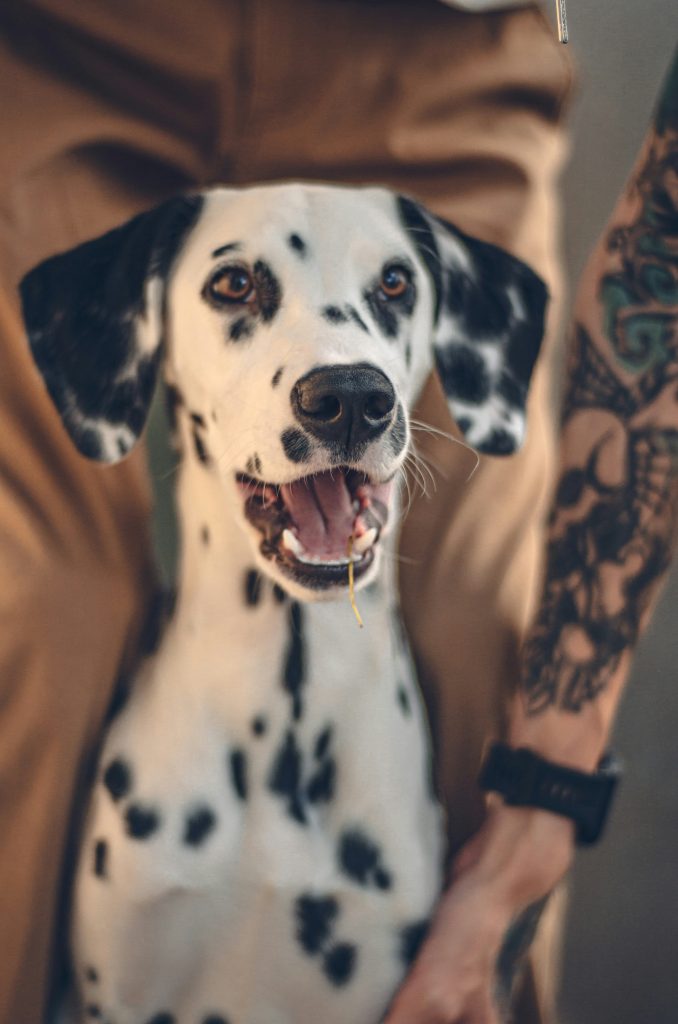Unraveling the Genetic Tapestry of Dog Skin Pigmentation
This article provides an overview of the role of genetics in dog skin pigmentation, exploring the genetic mechanisms, variants, health implications, and significance of canine coat color genetics.
Overview of Dog Skin Pigmentation Genetics
Understanding the genetics behind dog skin pigmentation is crucial for comprehending the wide array of coat colors and patterns seen in different breeds. Genes such as TYRP1, ASIP, MC1R, CBD-103, and MLPH play significant roles in determining these variations. For instance, the TYRP1 gene dilutes black pigment to brown but does not impact red pigment, showcasing how specific genes influence pigmentation. Furthermore, the CBD-103 gene, unique to dogs, is responsible for the dominant black color seen in certain breeds. These examples highlight the intricate interplay of various genes in dictating the pigmentation of dog coats.
Moreover, genetic mutations and crossbreeding can lead to miscoloration in dog breeds. Somatic mutations, for instance, can result in mosaicism, where patches of different colors appear in a dog’s coat due to genetic alterations. Understanding these genetic variations is vital for breeders and veterinarians to comprehend the origins of miscoloration and address potential health implications. By exploring the specific genes involved in dog skin pigmentation, researchers can not only unravel the complexities of coat colors but also develop strategies to predict, control, and potentially correct miscoloration issues in breeding programs.
Introduction: Understanding the Significance of Genetics in Dog Skin Pigmentation
Dog skin pigmentation is a fascinating aspect that reveals the genetic blueprint of a dog’s coat color. It goes beyond mere aesthetics, delving into the intricate world of genetics. For instance, the TYRP1 gene plays a pivotal role in diluting black pigment to brown but does not affect red pigment, showcasing the specific genetic mechanisms at play in determining coat color. This genetic complexity underscores the significance of understanding the role of genetics in dog skin pigmentation.
The research conducted by Verena Affolter and Daniel York sheds light on the genetic intricacies shaping dog skin pigmentation. These experts from the University of California-Davis have contributed significantly to unraveling the genetic mysteries behind the diverse coat colors and patterns observed in dogs [1]. Their work underscores the importance of genetic studies in deciphering the underlying mechanisms that govern dog skin pigmentation, providing a foundation for further exploration and practical applications in breeding and veterinary care.
Exploring the Genetic Mechanisms of Dog Skin Pigmentation
Understanding the genetic mechanisms that govern dog skin pigmentation is crucial for comprehending the diversity of coat colors and patterns seen in various breeds. One of the key genes involved in this process is the MC1R gene, situated at the E locus, which determines the foundational coat color of a dog. For example, specific variations in the MC1R gene can lead to a range of coat colors, from black to red, showcasing the significant impact of this gene on pigmentation.
Moreover, the ASIP gene, operating at the A locus, is responsible for regulating the production of pheomelanin in dog coats. This gene’s function is exemplified in breeds like the Golden Retriever, where variations in the ASIP gene can result in differences in the intensity of the red or golden hues in their coats. By influencing pheomelanin synthesis, the ASIP gene contributes significantly to the vibrant spectrum of coat colors observed in dogs.
Furthermore, the CBD103 gene, located at the K locus, is instrumental in promoting eumelanin synthesis in dogs, particularly affecting the richness of black pigmentation. Breeds like the Labrador Retriever demonstrate the impact of this gene, as variations in CBD103 can lead to differences in the depth of black coloration in their coats. The CBD103 gene’s role in eumelanin production showcases how genetic factors intricately control the pigmentation processes, resulting in the array of coat colors observed in canines.
Genetic Variants and Coat Characteristics in Dogs
Minor alleles at the E locus, such as e2, e3, EG, and eA, can result in a wide range of coat color phenotypes in dogs due to the diverse ways they interact with other genes and alleles. For instance, the presence of the e2 allele can lead to a yellow coat color in Labrador Retrievers, while the e3 allele might cause a wolf sable hue in Alaskan Malamutes, showcasing the significant impact of these minor alleles on coat variations [5]. These variations underscore the intricate nature of coat color genetics and the importance of considering multiple genetic factors in breeding programs to achieve desired outcomes.
In addition to the E locus, alleles at key loci like A, E, and K play pivotal roles in defining agouti, extension, and black coat patterns in dogs, respectively. For example, the A locus, regulated by the ASIP gene, not only influences pheomelanin synthesis but also determines whether a dog will have a solid color or a patterned coat like a brindle or a sable. Similarly, the K locus, controlled by the CBD103 gene, impacts eumelanin synthesis, affecting the intensity of black pigmentation in various breeds, such as the Doberman Pinscher or the Rottweiler, where the black coat color is a defining characteristic. These genetic determinants not only establish the base coat color but also contribute to the overall appearance and aesthetics of the dog’s coat.
Moreover, the intricate genetic mechanisms associated with harlequin and merle loci play a crucial role in creating unique patching and spotting patterns in dog coats, adding to the visual diversity seen across different breeds. For instance, the merle pattern, observed in breeds like Australian Shepherds and Catahoula Leopard Dogs, results from a genetic mutation that leads to random patches of diluted color on a pigmented background, showcasing the fascinating outcomes of genetic variations on coat patterns. Understanding these genetic intricacies is essential for breeders and veterinarians to navigate the complexities of coat color genetics and make informed decisions regarding breeding practices and health considerations.
Health Implications and Genetic Interactions in Canine Coat Color
The complexity of canine coat color genetics goes beyond aesthetics, as it also plays a crucial role in the health of dogs. For instance, certain genes involved in determining coat color can have implications for a dog’s overall well-being. An example of this is the linkage between coat color genetics and aural, visual, and neurological impairments in dogs. Studies have shown that specific genes responsible for coat pigmentation can also influence the development of health conditions, indicating a deeper connection between genetics and canine health.
Furthermore, melanocytes, the cells responsible for producing melanin, have a profound impact on a dog’s coat color and pigmentation. These specialized cells are not only essential for determining the color of a dog’s fur but also play a vital role in other parts of the body, such as the eyes, inner ear, central nervous system, and heart. The intricate process of melanogenesis that occurs within melanosomes, the organelles within melanocytes, highlights the significance of these cells in regulating pigmentation. By understanding how melanocytes function and their role in producing different types of pigments like eumelanin and pheomelanin, researchers can gain valuable insights into the health implications associated with canine coat color genetics.
Significance of Canine Coat Color Genetics
Canine coat color genetics play a vital role in shaping the historical, religious, ethical, and economic aspects of dog breeding practices. For example, in some cultures, specific coat colors or patterns are considered sacred or symbolic, influencing the selection and breeding of certain dog breeds over generations. Additionally, throughout history, coat color preferences have been intertwined with social status or religious beliefs, further emphasizing the cultural significance of canine coat color genetics.
Moreover, the ethical implications of coat color genetics extend to responsible breeding practices and the well-being of dogs. Breeders who understand the genetic basis of coat color can make informed decisions to prevent genetic disorders associated with certain colors or patterns. By prioritizing health and genetics in breeding programs, ethical breeders contribute to the overall welfare of canine populations and promote sustainable breeding practices that focus on health and longevity.
Furthermore, the economic impact of canine coat color genetics is substantial in the pet industry. Certain coat colors or patterns may be more popular and therefore more valuable in the market, influencing breeding trends and prices. Breeders who are knowledgeable about coat color genetics can strategically plan breeding programs to produce desirable coat characteristics that meet market demands, thereby impacting the economic value of specific dog breeds and individual puppies.
Conclusion: Insights into Genetics and Dog Skin Pigmentation
The study of genetics in dog skin pigmentation reveals a fascinating world of diversity and complexity in coat colors and patterns among various dog breeds. For example, the presence of minor alleles at the E locus, such as e2, e3, EG, and eA, can result in a wide range of coat color phenotypes, showcasing the intricate genetic interactions that determine the appearance of dogs’ fur. Understanding these genetic variations not only enriches our appreciation for the visual aesthetics of different dog coats but also provides valuable insights for breeding programs looking to achieve specific color outcomes in their litters.
Furthermore, genetic research in canine coat color genetics is not only an academic pursuit but also a practical tool for breeders and dog owners. For instance, genes like MC1R, ASIP, and CBD103 play pivotal roles in determining base coat color, regulating pheomelanin synthesis, and promoting eumelanin synthesis, respectively. This level of genetic understanding can empower breeders to predict and control coat characteristics in their breeding programs, ensuring that desired coat colors and patterns are consistently achieved. Ultimately, the ability to manipulate these genetic factors responsibly can have a significant impact on the health, appearance, and marketability of various dog breeds, emphasizing the importance of continued research in this field for the betterment of canine well-being.




